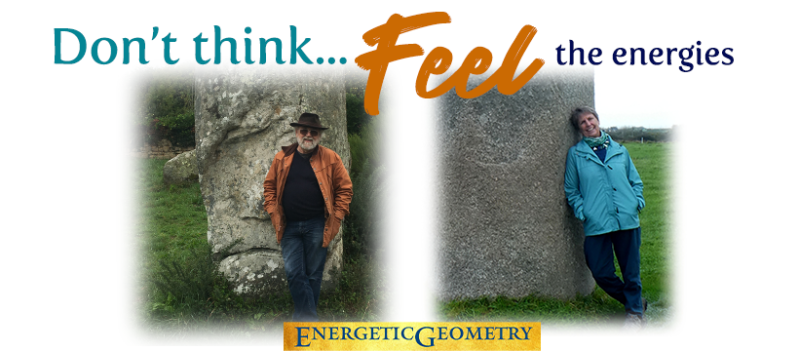It is interesting when you learn something new that takes you to unexpected far-off places, which is what happened when I first learned about earth tides. Did you know our earth is moving up and down, similar to ocean tides? I had never heard of such a concept. This idea opens the door to many other possibilities of reality and thought about the world we live in and how we interact with it. More importantly, how it interacts with us.
One thing to keep in mind is that everything vibrates through the air.
Our earth is not a static ball of water and rocks lost in outer space. It is surrounded by a gravitational field and is an attractor of celestial bodies. The sun, moon, and planets all pull on our world. We are under the sway of these external forces. Our planet also moves up and down each day, as the earth rotates around the sun and the moon rotates around the earth. This on-going rotation causes a gravitational pull on the earth’s crust, which results in the surface bulging outwards. Scientists can measure these earth tides. Its movement enables them to keep an eye on volcanoes and other interior earth movements. Earth tides provide scientists with such important information as the probability of volcanic eruptions and earthquakes.
What we are interested in, though, is that every 12 hours, our planet and everything on it moves ever so slowly up and down, 30 cm or 1 foot. The most substantial distortion or bulge happens during new or full moons because the sun and moon are aligned, and the effect is therefore stronger.
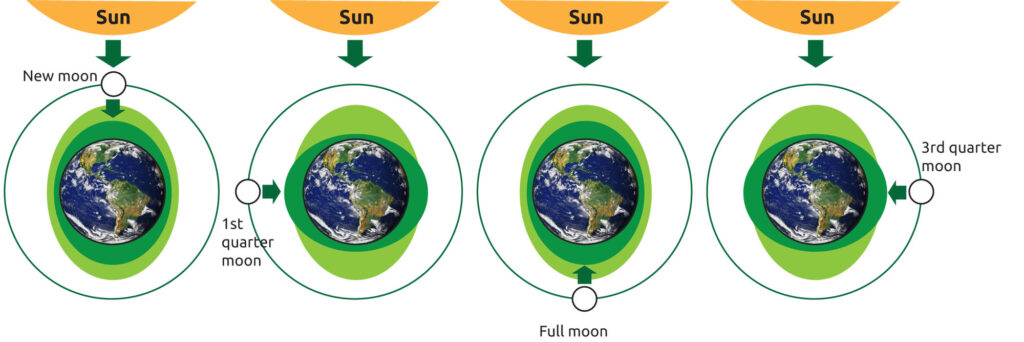
So, we are in constant movement. From the tallest mountain to the smallest plant, everything is in ever so slight motion. This is cool, but is there something else that makes this new idea so exciting? For me, as a master builder, the answer is, “Yes.”
But let’s first define vibration.
It is the frequency that is emitted or one that locations or objects emit. Frequency describes how fast the object moves. It is a measurable quantity and this is a fascinating concept for master builders.
Ancient cultures in Egypt, India, and Europe found that there was a correspondence between the elements and vibration. They also discovered there was a relationship between musical notes, emotions, and frequency. In fact, there is an entire Indian Sanskrit text called Natya Shastra, written around 200BCE, devoted to the performing arts. The last 6 chapters are dedicated to music and detail information about notes and their relationships with emotions and provide their frequencies.
Wow, how interesting is this? First of all, each musical note has a relationship with emotions. Musical notes can express the gamut of emotions from sadness and hate to love, confidence, and joy. Because we know frequency is a measurable quantity, we can find a measurement for each musical note and emotion.
How can we find these measurements?
Our ancestors found a way to materialize the measurements of the five elements and musical notes, by something we now call sacred geometry. They developed a geometrical concept that the Hindus call a “mandala.” This mandala is a geometrical representation of sacred space.
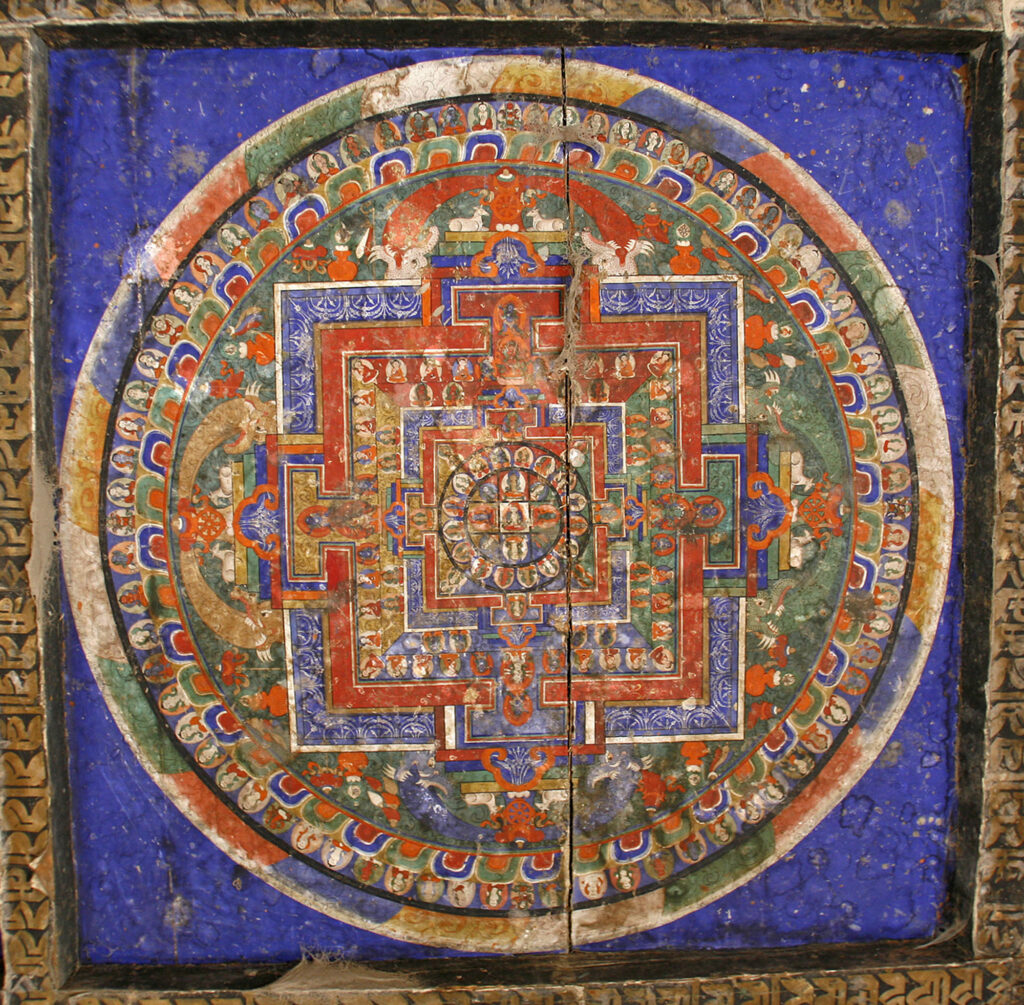
It organizes our universe and depicts our relationship with the cosmos. The central point of the mandala is that the shape is connected to the rhythm of the sun. It is a rectangle connected to the annual maximum and minimum positions of the sun.
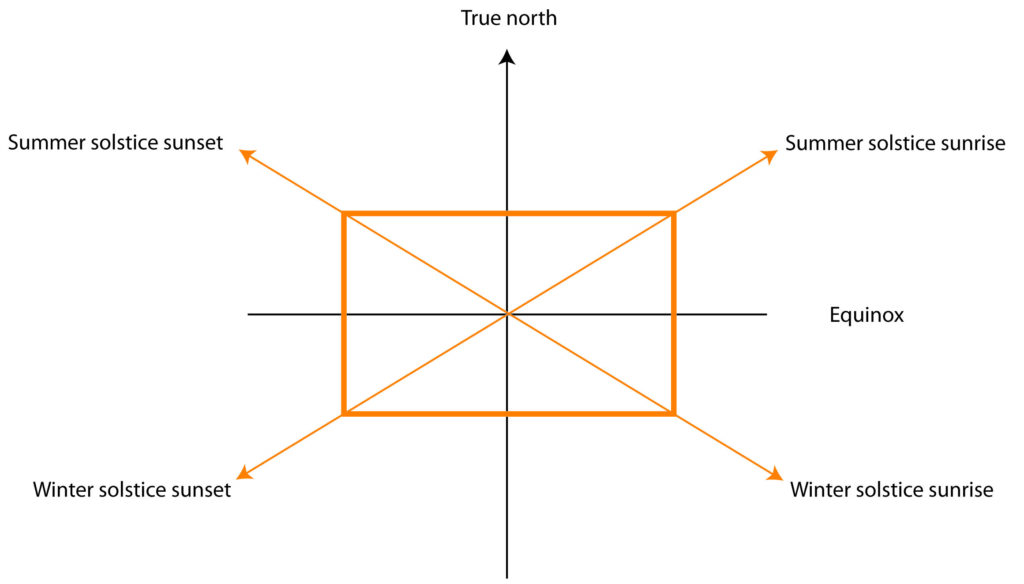
If you look closely at the center of the Tibetan mandala above, you can see four lines that intersect. These lines are connected to the rhythm of the sun in Kagbeni, Nepal. In the tradition of the master builders, this shape is called the solsticial quadrilateral.
This solar rectangle allows for the development of a symmetrical geometry that creates the shape of the mandala of the place. As the mandala evolved from a rectangle, other squares, circles, and polygons were identified, and the five elements were given geometrical expression.

This means the elements can be measured and used for building structures.
In southern India, they built five amazing temples, each one expressing and dedicated to one of the five essential elements. Nataraja is the ether element temple. Ekambeswara Temple is the earth element, and Jambukareswara represents the water element. The Fire element temple is called Arunachaleswarar, and the air temple is Sri Kalahasti.
One the of most remarkable things about these temples is the measurements used to build the temple are in direct relationship to the element. One way the element is expressed in the temple is through the inside ambiance. Ambiances are the interior colors, or auras, of a place. For example, a clear light green color is consistent with the ether temple.
Another way elements are expressed is through feelings corresponding to the chakra system of the body. Ether is connected to the heart chakra and the color green. When you walk through the temple of ether, you can feel your heart open and expand. These feelings and ambiances are created by the measurement and the vibration of earth tides. Because of this movement, the entire framework, rooms, walls, ceilings, and the distances between columns are all vibrating and emitting a frequency that we can feel in the physical body.
Getting back to musical notes, because they have a frequency they can be translated into a measurement as well, which was used in building. Musical notes are related to emotions, and their measures can elicit a variety of emotions, some of them good and others awful. The knowledge that there can be good or bad measurements is nothing new. The Chinese have applied this knowledge with the use of their Feng Shui Ruler, still used today. The use of it was first recorded during the Sung dynasty (960 – 1128 AD). The auspicious and inauspicious measurements were first applied to furniture, windows, and doors in the imperial palace, and the measure relates to the Imperial foot. Unfortunately, the Feng Shui rulers were made with the measurement of Beijing, and they don’t work in other latitudes.
Today we can find measurements through the use of the solar mandala and its organization of sacred space for each different latitude. The elements have their correspondence to musical notes and emotions, as well. For example, the element of earth is the note of C and it is confident and strong. Water is D, which is romantic and erotic, E is fire, both sweet and tender. F is ether, quietly both calm and peaceful. Finally, G is air, joyfully happy and soft.

Homes can be designed with musical notes and the elements.
There can be individual measurements for each room. For example, in a bedroom, it is best to use the elements of earth and ether. The emotions for this bedroom configuration are confidence, calm, tranquility, and peace. Ether is particularly interesting to use when building because it is connected to life force energy or prana. On the other hand, if you use fire, you can get some intense and destructive energy that not conducive to sleep!
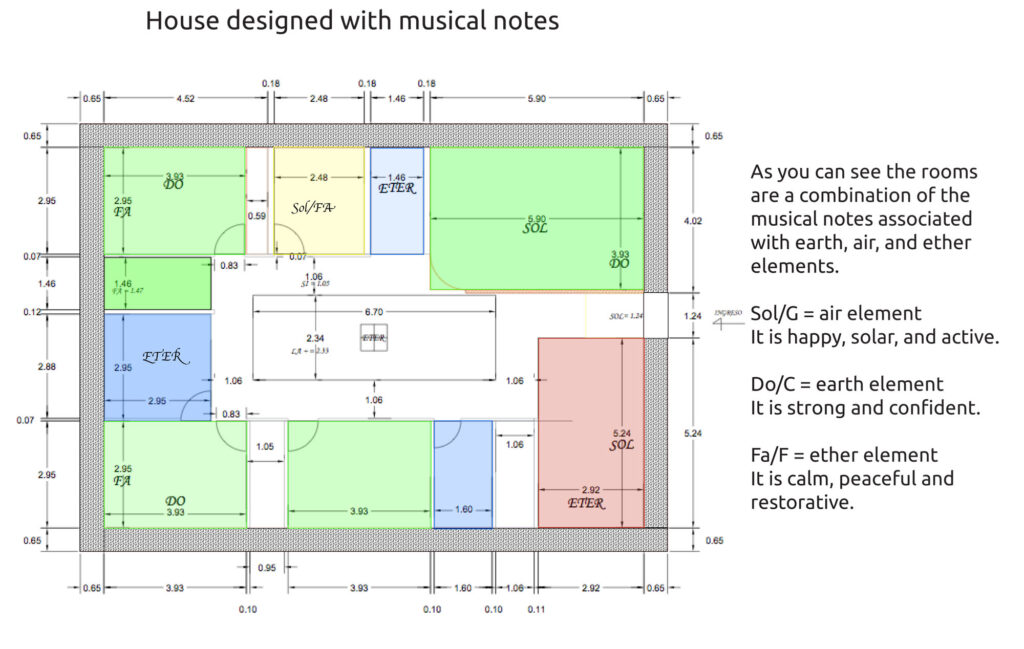
The idea that structures are constantly vibrating is eye-opening for anyone sensitive to their environment. The ability to use solar measurements to create a specific ambiance and emotion in rooms and houses is a game-changer for anyone involved in creating new spaces. You can now understand why I was amazed to learn about earth tides. This seemingly small bit of information about vibration fundamentally changed how I look at temples, homes, and other spaces. We can create homes that sing with the beauty of life and bring the body, mind, and soul into harmony with the universe.
By Karen Crowley-Susani
First published in the December 2019 issue of Star Nations Magazine.
To learn more about the solar mandala, elements, musical notes, and measurements, be sure to check out our newest Secrets of Sacred Geometry Certification Trainings. This training is a 2-year apprenticeship that imparts ancient and modern wisdom so you can learn how to build homes and other energetic structures of high vibration. Click below to check it out.
